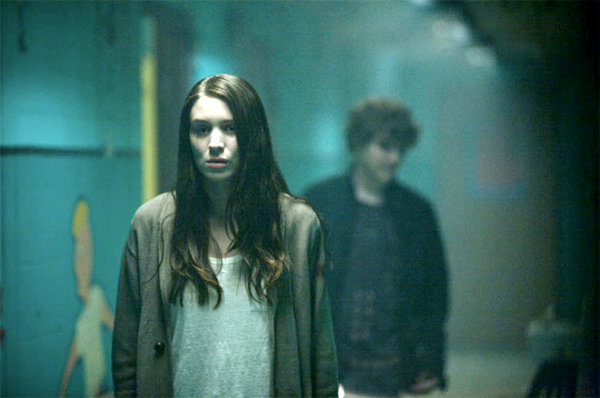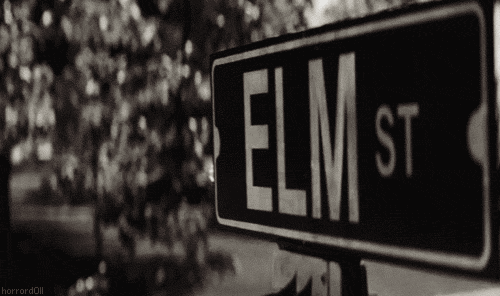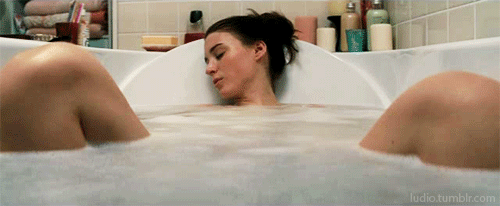Nightmare on Elm Street is the chilling tale of a group of young teenagers who are being hunted and horrifically murdered in their dreams by psycho-killer, Fred Kruger who sexually abused them as children. The movie was originally written and directed in 1984 by Wes Craven and later remastered in 2010 by Micheal Bay. The remake ultimately stayed faithful to the initial themes of the first movie and was generally well accepted by the horror film community. Although the two films follow a similar story line, the influence of current horror flick motifs are clearly seen in the newer version of Nightmare on Elm Street. The "slasher film" category follows a specific formula, of which Nightmare on Elm Street is no exception. The film includes several components of this horror formula as in explained in Carol Clovers article Her Body: Himself. The film includes all the crucial elements which breed box office success: a weapon, the terrible place, the final girl and a psycho killer acting out of suppressed sexuality. Along with these factors, the film also includes gender representations which abide and disrupt the norm. The reproduction of Nightmare on Elm Street (2010) film delves even further into the ambiguity of the unconscious mind while including just enough gore and "jump factor" to earn its' place as a slasher movie classic.
What makes Nightmare on Elm Street so disturbing is the characters inability to escape Freddy within their dreams. Whenever any character falls asleep they are taken to the terrible place. Freddy exists in what appears to be a boiler or factory room of some kind, where the teenagers consistently meet their death. As discussed in class, it is clear that this place is a physical reflection of a womb. Warm, wet and only one way out. Later in the film, after Freddy's back story is revealed to the viewer, it is easy to connect the Terrible Place to the same secret place where Freddy would sexually abuse the children. Only now, he murders them in this new terrible place instead.
 The most easily recognized factor from Nightmare on Elm Street of Carol Clover's horror movie formula is the the final girl. The final girl assigns any female character as the one who will ultimately have to face the killer by the end of the film. The first female introduced in the film is Kris. She is visibly sexy and beautiful, which are characteristics that usually point towards the final girl. Kris is the first character to begin questioning the relationship between the group of teenagers, which leads the viewer to believe she would be the focal point of the movie. The first time the viewer sees the "terrible place" is within Kris' dreams. Freddy chases and tortures her there, but Kris wakes up before he can kill her. I believed Kris to be the final girl, but I was proved wrong when Freddy sliced her open in her bedroom later in the film. Kris' death mirrors Tina's from the original movie almost perfectly. Kris body is shown rolling around and writhing in pain before she floats up into the air and her mid section is penetrated by Freddy's knives. Kris' death is drawn out for a horrific amount of time as she is thrown against the ceiling and surrounding walls. The whole scene is layered thick with sexual overtones and innuendos which all relate back to Carol Clovers formula.
The most easily recognized factor from Nightmare on Elm Street of Carol Clover's horror movie formula is the the final girl. The final girl assigns any female character as the one who will ultimately have to face the killer by the end of the film. The first female introduced in the film is Kris. She is visibly sexy and beautiful, which are characteristics that usually point towards the final girl. Kris is the first character to begin questioning the relationship between the group of teenagers, which leads the viewer to believe she would be the focal point of the movie. The first time the viewer sees the "terrible place" is within Kris' dreams. Freddy chases and tortures her there, but Kris wakes up before he can kill her. I believed Kris to be the final girl, but I was proved wrong when Freddy sliced her open in her bedroom later in the film. Kris' death mirrors Tina's from the original movie almost perfectly. Kris body is shown rolling around and writhing in pain before she floats up into the air and her mid section is penetrated by Freddy's knives. Kris' death is drawn out for a horrific amount of time as she is thrown against the ceiling and surrounding walls. The whole scene is layered thick with sexual overtones and innuendos which all relate back to Carol Clovers formula. The final girl is actually Nancy, a mysteriously dark and plain looking girl who is introduced in the same scene as Kris, but she is overshadowed by Kris' presence. Nancy is a distant character, often shown sketching dark images or spending time by herself. After Kris dies, Nancy takes over as the official Final Girl for the entirety of the film. We begin to see Freddy visiting Nancy in her dreams more frequently after Kris' death. Later in the film it is revealed that Nancy was Freddy's favorite and that he preferred her to all the other children in the preschool. This explains why Nancy is chosen as Freddy's Final Girl, even after his death he still obsesses over her. In the end, Nancy successfully pulls Freddy from her dreams and into reality where she cuts off his bladed hand and slits his throat fulfilling the prophecy of the final girl.
The final girl is actually Nancy, a mysteriously dark and plain looking girl who is introduced in the same scene as Kris, but she is overshadowed by Kris' presence. Nancy is a distant character, often shown sketching dark images or spending time by herself. After Kris dies, Nancy takes over as the official Final Girl for the entirety of the film. We begin to see Freddy visiting Nancy in her dreams more frequently after Kris' death. Later in the film it is revealed that Nancy was Freddy's favorite and that he preferred her to all the other children in the preschool. This explains why Nancy is chosen as Freddy's Final Girl, even after his death he still obsesses over her. In the end, Nancy successfully pulls Freddy from her dreams and into reality where she cuts off his bladed hand and slits his throat fulfilling the prophecy of the final girl. Fred Kruger's image is certainly unforgettable. Between his mutilated face and striped sweater it is no wonder why he has served as a Halloween icon for so long. But what makes Freddy the most terrifying is his choice of weapon, the bladed leather glove. Freddy's weapon could not be anymore phallic in a sense, used for the penetration and the killing of the kids. The scene which really made my skin crawl was the famous bathtub scene, where the sexuality and brutality of the weapon is most clearly demonstrated. The scene shows the Nancy with her legs splayed in the tub as Freddy's hand reaches up from the water between her thighs. This scene is also the first real demonstration of Freddy's disturbing sexuality.
Fred Kruger's image is certainly unforgettable. Between his mutilated face and striped sweater it is no wonder why he has served as a Halloween icon for so long. But what makes Freddy the most terrifying is his choice of weapon, the bladed leather glove. Freddy's weapon could not be anymore phallic in a sense, used for the penetration and the killing of the kids. The scene which really made my skin crawl was the famous bathtub scene, where the sexuality and brutality of the weapon is most clearly demonstrated. The scene shows the Nancy with her legs splayed in the tub as Freddy's hand reaches up from the water between her thighs. This scene is also the first real demonstration of Freddy's disturbing sexuality.The final piece to the slasher film puzzle is the Psycho Killer and their suppressed sexual urges. Freddy fits this description perfectly. As a known child abuser, we can see that Freddy gets off on abusing or killing the kids, especially the girls. When Freddy visits the boys, he kills them fast and brutally. However he stalks the girls multiple times before he decides to kill them in the most sexual way possible. When Freddy has Nancy trapped in her dream he ties her to a bed in a young girls nightgown. This infantilization of Nancy shows just how obsessed Kruger is with Nancy. Kruger is a twisted sex offender who preys on the innocent. He attacks the children when they are unable to escape him, either when they were too young to fight back, or within their dreams.
Carol Clover solidifies the blueprint that most slasher films tend to follow and the themes they include in her article Her Body: Himself. Nightmare on Elm Street is a prime example of Clover's theory. The final girl, the terrible place, the weapon and the psycho-killer himself are all tropes that are clearly identifiable in both the original and remake of Nightmare on Elm Street. The gender roles in this film are not strictly conventional nor completely overturned. From what I observed, the gender expectations varied by character. Kris fits well into the female role, displaying femininity through her appearance and when she is visibly screaming in hysteria. Jesse is shown cowering and begging before his death which separates him from the masculine character traits we usually associate male characters with. Quentin however fits fairly well into the male lead position, he faces Freddy bravely and looks after Nancy. Nancy is the character that most disrupts gender expectations, she is hardly ever shown shrieking or lost in hysteria. She also succeeds in killing Freddy just after delivering my favorite line in the movie, "It hurts doesn't it? It's cause you're in my world now, bitch!"
 All in all, I enjoyed the remake of the film. It had much more substance in comparison with the first movie, which provided more material for analysis (for which I was thankful for). After reading Clover's article the movie was easy to dissect and recognize the slasher film formula.
All in all, I enjoyed the remake of the film. It had much more substance in comparison with the first movie, which provided more material for analysis (for which I was thankful for). After reading Clover's article the movie was easy to dissect and recognize the slasher film formula. 


I really like the way your blog is set up; I like the organization of the paragraphs, the way the photos are incorporated and just the overall look of everything. You provide ample detail and explanation for the reader. It is very well written.
ReplyDeleteI like how you compared the two films, the old and the new. The images you used described the scenes perfectly and your description of the movies was great and filled with detail. Along with that, your comparison's to Clover's article fit in very well. Good job!
ReplyDeleteI really like the title of your blog! It caught my attention instantly! I also did this film for my blog, so I can see exactly where you're coming from for all of your points. I really enjoyed your comparison between the new and old films, as this film really (and I mean REALLY) takes a lot of inspiration from the original. I also really like your .gifs on the side with the two bathtubs scenes. I think that's a really cool way of depicting both of those scenes! You did an awesome job with this blog overall!
ReplyDelete